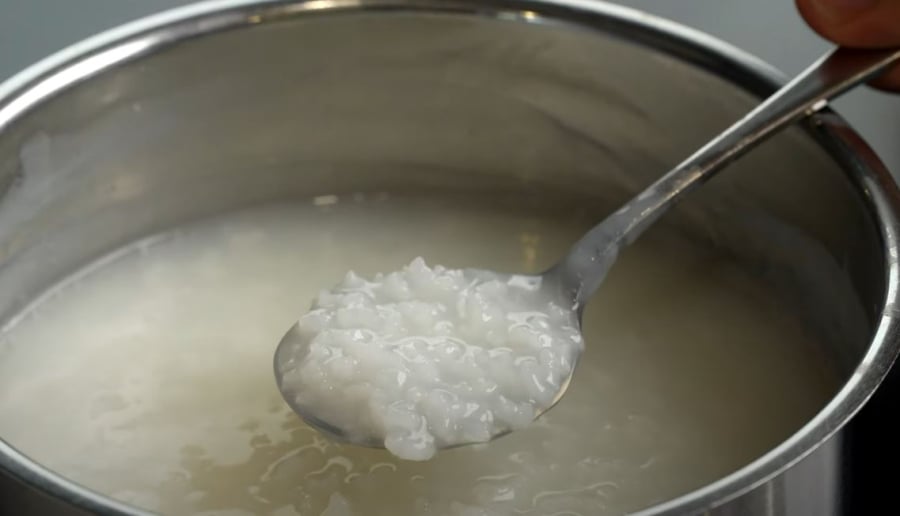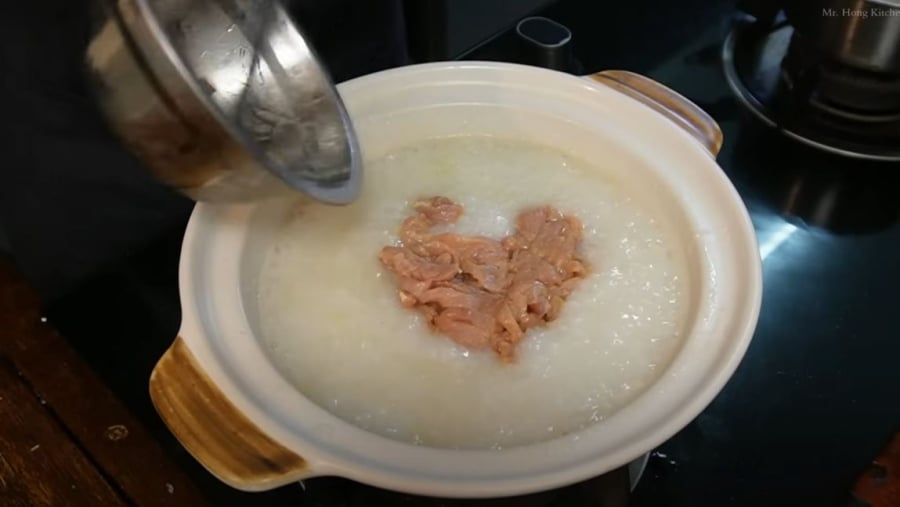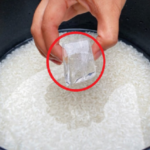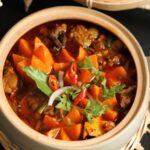Creating a smooth and creamy porridge often requires a significant amount of time to properly cook the rice grains until they are soft and mushy. Traditional porridge-making can be time-consuming and laborious as it demands constant attention to prevent burning. To expedite the process while maintaining the desired consistency, consider employing the following tricks.
Soak the rice before cooking
Prior to cooking, it is advisable to soak the rice in water for approximately 30 minutes. This process allows the rice grains to absorb water, becoming softer and quicker to cook.
Combine glutinous and non-glutinous rice

Incorporating both types of rice results in a smoother, more aromatic porridge.
Instead of solely relying on non-glutinous rice, try adding a small quantity of glutinous rice. Glutinous rice contributes to the desired creamy texture and enhances the aroma of the porridge.
Utilize a rice cooker
Cooking porridge in a rice cooker saves effort and time. Depending on the capacity of your cooker and the desired quantity of porridge, adjust the amount of rice and water accordingly.
Adding a spoonful of cooking oil prevents the porridge from boiling over when it reaches a rolling boil.
After approximately 20 minutes of cooking in the rice cooker, when the rice grains have expanded, transfer the porridge to another pot and continue cooking on a stovetop. If the porridge becomes too thick, add some water, stirring continuously to avoid burning. This additional step ensures a softer and smoother consistency. Season to taste.
Roast the rice before cooking
If you prefer your porridge with rice grains that retain their shape and texture, consider roasting the rice before cooking. Roasting imparts a delightful aroma to the porridge. The roasting process hardens the rice grains, enabling them to maintain their structure even after prolonged cooking without disintegrating.
Avoid adding all ingredients at once

Adding ingredients separately ensures optimal cooking for each component.
Each ingredient has a unique cooking time. If you add everything at once, the rice may remain undercooked while the meat or seafood becomes overcooked and loses its flavor.
For seafood porridge or minced meat porridge, it is advisable to first cook plain porridge. Only when the rice is sufficiently soft, add the meat or seafood, which can be pre-sautéed with seasonings.
For rib or chicken porridge, pre-boil the ribs or chicken, and set them aside. Use the broth from boiling to cook the porridge. Add the meat back into the porridge once the rice is soft.
Use hot water for cooking porridge
When making porridge, avoid the common practice of adding rice to cold water and then placing the pot on the stove. This method increases the likelihood of burning if not carefully monitored.
Instead, bring the water to a boil first, and then add the rice to commence cooking.
Cook porridge using a thermos or insulated pot
With this method, you can prepare the porridge the night before and have it ready for the next morning.
In the evening, rinse the rice and place it in a pot. Add water and bring it to a brief boil for a few minutes. Subsequently, transfer the rice and water to a thermos or insulated pot, close the lid tightly, and leave it overnight.
In the morning, remove the porridge from the thermos, pour it into a pot, and place it on the stove to reheat. Add your choice of ingredients, such as fish, meat, or vegetables, and season to taste.



































